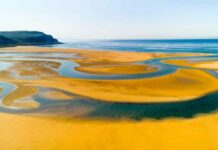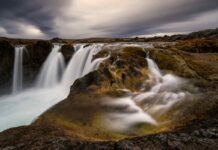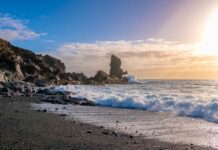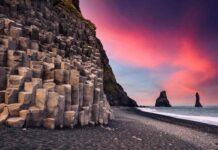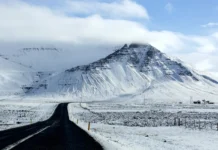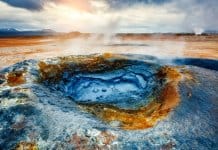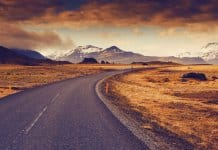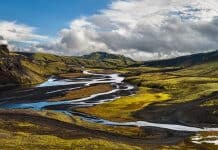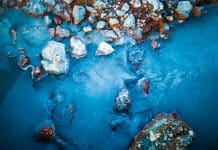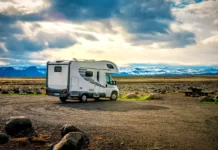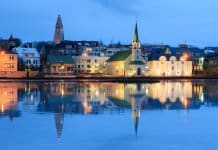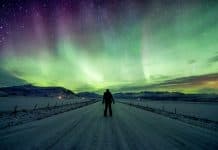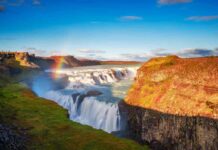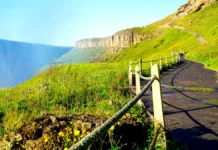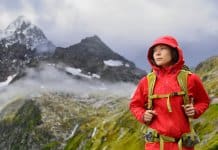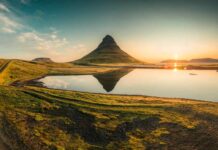Nestled along Iceland’s southern coast, Reynisfjara Beach is one of the most mesmerizing natural wonders in the country. This black sand beach in Iceland is renowned for its striking landscape, where the interplay of volcanic sands, towering basalt columns, and powerful Atlantic waves create a scene of otherworldly beauty. Reynisfjara has become a must-visit destination for travelers seeking to experience the raw and untamed nature of Iceland.
In this article, we’ll explore the unique characteristics of Reynisfjara, delve into its geological and cultural significance, and provide practical information to help you make the most of your visit, including essential safety tips to ensure a safe and memorable experience.
The Enchanting Landscape of Reynisfjara
Reynisfjara Black Sand Beach is well-known for its dramatic scenery, shaped by the powerful forces of nature. The beach is located near the small village of Vík í Mýrdal, about 180 kilometers southeast of Reykjavik.
As you approach the beach, the first thing that captures your attention is the deep black sand that stretches out before you, a stark contrast to the white-capped waves crashing onto the shore. This black sand is the result of volcanic activity, where molten lava cooled rapidly upon contact with the ocean, fragmenting into the fine black particles that now form the beach.

The Basalt Columns of Gardar
One of the most iconic features of Reynisfjara Beach is the basalt columns known as Gardar. These towering, hexagonal columns are the remnants of ancient lava flows that cooled slowly, allowing the rock to contract and crack into geometric shapes.
The columns rise dramatically from the beach, creating a natural amphitheater that adds to the beach’s mystical aura. Visitors often marvel at the symmetry and scale of these formations, which have become a popular backdrop for photography.
Reynisdrangar Sea Stacks
Off the coast of Reynisfjara are the Reynisdrangar sea stacks, towering rock formations that rise from the ocean like sentinels guarding the shore. According to Icelandic folklore, these sea stacks were once trolls who ventured out into the sea to pull ships ashore.
However, they were caught by the first rays of sunlight and turned to stone, where they remain to this day. The Reynisdrangar sea stacks add an element of mystery and legend to the already breathtaking landscape of Reynisfjara.
The Dangers of Reynisfjara
While Reynisfjara Black Sand Beach is undeniably beautiful, it is also known for its potential dangers. The beach is notorious for its sneaker waves, powerful and unexpected waves that can surge far up the beach without warning.
These waves have been responsible for several accidents over the years, as visitors who venture too close to the water’s edge are at risk of being swept out to sea. The combination of strong currents, cold water temperatures, and the unpredictability of the waves makes Reynisfjara a place where caution is essential.

Safety Tips for Visiting Reynisfjara
The beauty of Reynisfjara is accompanied by significant risks, so it’s crucial to be aware of safety guidelines when visiting the beach.
- Stay away from the water’s edge: The most important safety rule at Reynisfjara is to keep a safe distance from the ocean. Sneaker waves can appear suddenly and without warning, so it’s recommended to stay at least 20 to 30 meters away from the water, even on calm days.
- Respect warning signs: There are multiple signs posted at Reynisfjara warning visitors of the dangers. Pay attention to these signs and follow the guidance provided. The beach’s reputation as one of the most dangerous in Iceland is well-earned, and it’s crucial to take the warnings seriously.
- Be mindful of weather conditions: Iceland’s weather can change rapidly, and conditions at Reynisfjara can become hazardous quickly. Check the weather forecast before your visit and be prepared to leave the beach if conditions deteriorate.
- Avoid climbing on the basalt columns: While the basalt columns at Reynisfjara are tempting to climb, it’s important to avoid doing so. The rocks can be slippery, and a fall from the columns could result in serious injury. Instead, admire the formations from a safe distance.
- Travel with a buddy: If possible, visit Reynisfjara with others, and keep an eye on each other while exploring the beach. Having a companion can help ensure that everyone stays safe.

The Cultural and Geological Significance of Reynisfjara
Reynisfjara is not only a natural wonder but also a site of cultural and geological importance. The beach has been shaped by the powerful forces of Iceland’s volcanic activity, and its unique features are a testament to the island’s dynamic geology.
Volcanic Origins
The black sand of Reynisfjara is a direct result of volcanic eruptions, particularly from the nearby Katla volcano, one of Iceland’s most active and feared volcanoes. Over thousands of years, eruptions have produced vast quantities of lava that flowed into the ocean.
When the lava came into contact with the cold sea water, it shattered into small fragments, eventually forming the black sands that define the beach today. This process is ongoing, and Reynisfjara continues to evolve as new volcanic material is introduced.
Folklore and Mythology
Iceland is a land rich in folklore, and Reynisfjara is no exception. The Reynisdrangar sea stacks are central to one of the region’s most famous legends, which tells of two trolls who tried to drag a three-masted ship to shore.
As the sun rose, the trolls were turned to stone, becoming the pillars we see today. This story is just one example of how the natural landscape of Iceland has inspired a deep cultural connection to the land, where myths and legends are intertwined with the physical world.

Reynisfjara in Popular Culture
The striking beauty of Reynisfjara has not gone unnoticed by filmmakers and photographers. The beach has been featured in several high-profile productions, including the HBO series Game of Thrones, where it served as the backdrop for scenes set in the icy lands beyond the Wall.
The dramatic scenery of Reynisfjara has also made it a popular location for music videos, commercials, and photography, further cementing its status as one of Iceland’s most famous landmarks.
Planning Your Visit to Reynisfjara
A visit to Reynisfjara Black Sand Beach is a highlight of any trip to Iceland. However, to fully enjoy the experience, it’s important to plan ahead and be aware of the unique challenges and opportunities the beach presents.
Getting to Reynisfjara
Reynisfjara is located about 2.5 hours by car from Reykjavik, making it an accessible day trip or a stop on a longer journey along the southern coast. The beach is just a short drive from the village of Vík í Mýrdal, which offers amenities such as restaurants, gas stations, and accommodations. The road to Reynisfjara is well-maintained, and the beach is easily accessible by a short walk from the parking area.
For those who prefer not to drive, several tour companies offer guided day trips to Reynisfjara as part of a southern Iceland itinerary. These tours often include other nearby attractions, such as the Skógafoss and Seljalandsfoss waterfalls, providing a comprehensive experience of the region’s natural wonders.

Best Time to Visit Reynisfjara
Reynisfjara can be visited year-round, each season offering a different perspective on the beach’s beauty. In the summer months (June to August), the weather is milder, and the long daylight hours allow for extended exploration. However, the beach can be crowded during this time, as it is one of Iceland’s most popular tourist destinations.
Winter (December to February) offers a more solitary experience, with fewer visitors and the possibility of seeing the Northern Lights. The contrast between the black sand and the snow-covered landscape creates a striking visual effect, but be prepared for colder temperatures and potentially challenging weather conditions.
Spring and autumn offer a balance between the two extremes, with fewer crowds than summer and more moderate weather than winter. Regardless of the season, it’s important to dress appropriately for the conditions, with warm layers, waterproof clothing, and sturdy footwear.

Frequently Asked Questions
Why can’t you swim in Reynisfjara?
Swimming at Reynisfjara is extremely dangerous due to the powerful sneaker waves and strong currents. The cold water temperatures and unpredictable ocean conditions make it unsafe for swimming.
Why is Reynisfjara Beach famous?
Reynisfjara is famous for its stunning black sand, the iconic basalt columns known as Gardar, and the towering Reynisdrangar sea stacks. The beach’s dramatic landscape and cultural significance have made it one of Iceland’s top tourist destinations.
What does Reynisfjara mean in English?
The name “Reynisfjara” can be translated to “Reynir’s Beach” in English, with “fjara” meaning “beach” or “shore” in Icelandic. The name is believed to be derived from the nearby Reynisfjall mountain.
How do you stay safe at Reynisfjara?
To stay safe at Reynisfjara, keep a safe distance from the ocean, respect all warning signs, avoid climbing on the basalt columns, and be mindful of weather conditions. It’s also advisable to visit the beach with others and always be aware of your surroundings.
Iceland’s most famous beach
Visiting Reynisfjara Black Sand Beach is an unforgettable experience, offering a glimpse into the raw and untamed beauty of Iceland’s southern coast. Whether you’re drawn by the folklore, the unique geological formations, or the stunning vistas, Reynisfjara promises to be a highlight of your Icelandic adventure.
For those planning to explore Reynisfjara and other natural wonders of Iceland, consider reviewing our best campervan rental in Iceland guide to find the best vehicle for your journey. Additionally, if you plan to camp nearby, be sure to familiarize yourself with the camping rules in Iceland to ensure a safe and responsible stay.

